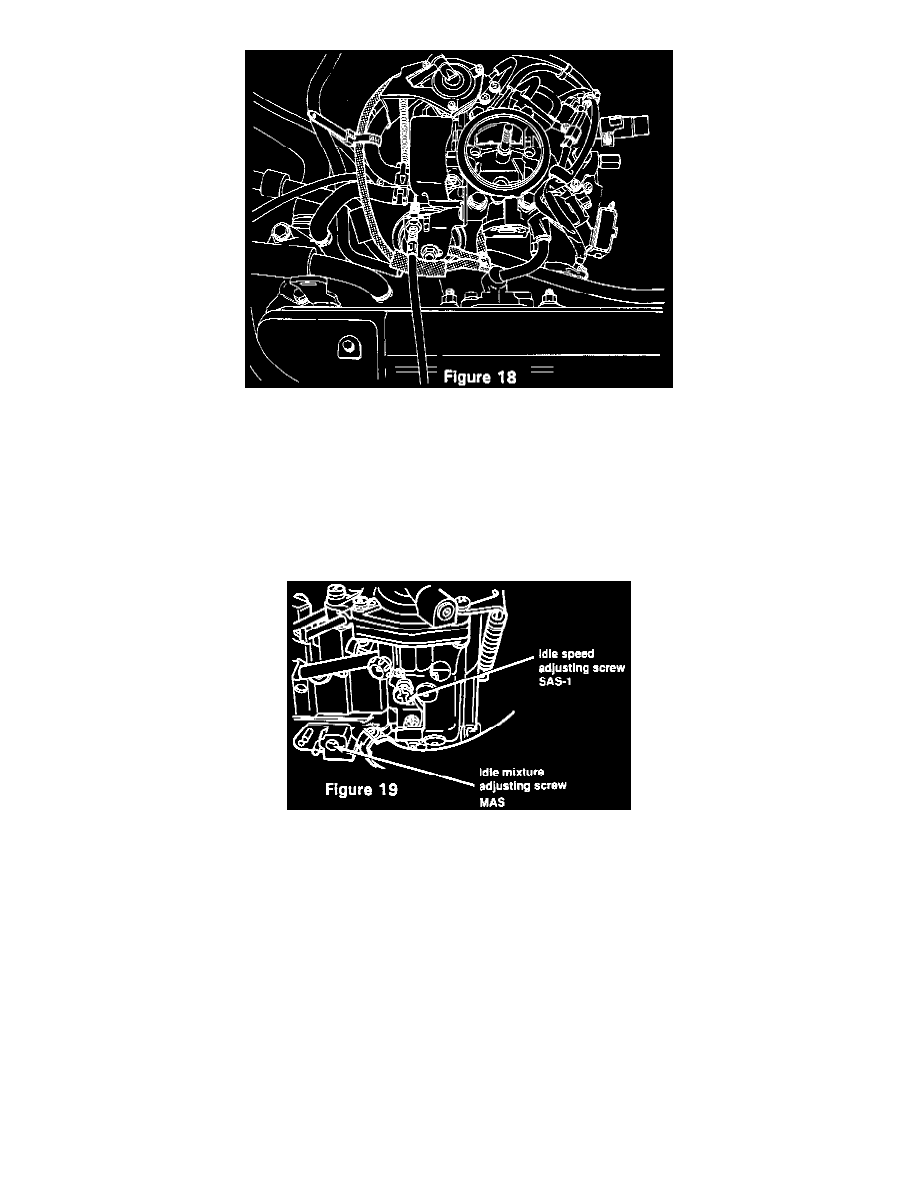Colt Vista 4WD L4-1997cc 2.0L SOHC (1985)

4.
Route the vacuum hose harness around the rear of the carburetor and insert the F-connector into the cut ends of the hose (Figure 18).
5.
Secure the harness to the carburetor water hose with the supplied tie strap to prevent interference with the carburetor linkage.
H. Check Idle Speed and Basic Timing
H.
Check Idle Speed and Basic Timing
1.
Start the engine and warm it to normal operating temperature.
2.
Run the engine for at least five seconds between 2000 and 3000 RPM.
3.
Using a tachometer, check the idle speed. If it is not between 650 - 850 RPM, readjust it to 750 RPM using idle speed adjusting screw No. 1 (SAS-1), (Figure 19).
4.
After the idle speed has been verified, verify that the basic ignition timing is 8 BTDC using the Service Manual Procedure. If it is not, readjus
I. Test Feedback Carburetor
I.
Test Feedback Carburetor
1.
Insert an exhaust gas analyzer probe into the tailpipe.
2.
Run the engine at 2500 RPM in neutral for 30 seconds and then record the tailpipe CO reading at 2500 RPM.
3.
If the CO reading is greater than 1.2%, re-check the installation of the jet mixture solenoid. Loosen the jet mixture solenoid and inspect for m
4.
Run the engine at 2500 RPM in neutral for 30 seconds and then record the tailpipe CO reading at 2500 RPM.
5.
If the CO reading is 1.2% or less move to step 6. If the CO reading is still greater than 1.2% then an Idle Speed & Mixture adjustment must be
6.
Turn off the engine, disconnect the tachometer and remove the probe from the tailpipe.
